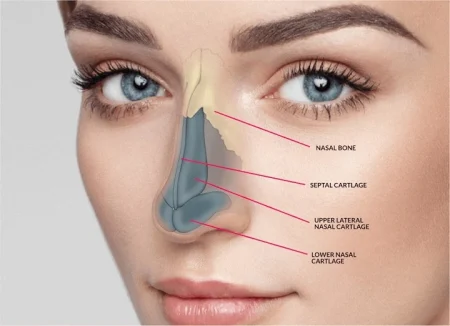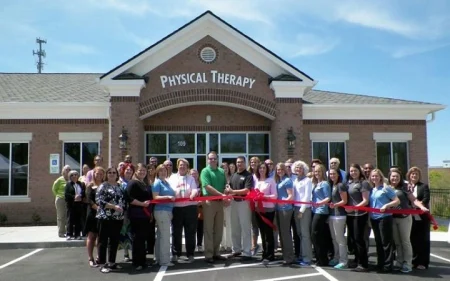Living with joint pain can feel like a constant battle. Simple activities, like walking up the stairs or opening a jar, can become major challenges. If you’re tired of letting joint discomfort dictate your life, you’re not alone. The good news is that numerous professional treatment options are available.
In this guide, we’ll help you understand the different paths you can take to manage and treat your joint issues effectively. This way, you can take your first step toward finding relief and reclaiming your mobility.
Understanding Your Joint Pain First
Before you can choose a treatment, it’s crucial to get an accurate diagnosis. The source of your joint pain determines the most effective approach. Is it caused by inflammation, like in rheumatoid arthritis? Or is it from wear and tear, such as osteoarthritis? Perhaps it’s the result of a past injury. A thorough evaluation by a healthcare professional is essential. They may use diagnostic tools like X-rays, MRI scans, or blood tests to pinpoint the exact cause of your discomfort.
This initial step is foundational because treating knee pain from a torn meniscus requires a different strategy than managing hip pain from bursitis. A clear diagnosis provides a roadmap, guiding you and your doctor toward the most suitable treatment plan tailored specifically to your condition.
Considering Non-Invasive Therapies
For many individuals, the journey to relief begins with conservative, non-invasive treatments. These methods aim to reduce pain and improve function without needles or surgery. Physical therapy is a cornerstone of this approach. A physical therapist designs a customized exercise program to strengthen the muscles surrounding the affected joint, which improves stability and reduces stress on the joint itself. They also work on increasing your range of motion and flexibility.
Other non-invasive options include occupational therapy, which helps you learn new ways to perform daily tasks without aggravating your pain. Lifestyle modifications, such as weight management and adopting a low-inflammation diet, can also have a profound impact on reducing the load and irritation on your joints. These therapies are often the first line of defense and can be incredibly effective, especially when started early.
Exploring Minimally Invasive Procedures
When non-invasive therapies don’t provide enough relief, your doctor might suggest minimally invasive procedures. These options are more direct than physical therapy but less intensive than major surgery. Common examples include corticosteroid injections, which deliver powerful anti-inflammatory medication directly into the joint capsule to quickly reduce swelling and pain.
Another option is hyaluronic acid supplementation, sometimes called viscosupplementation. This procedure involves injecting a gel-like substance into the joint to act as a lubricant and shock absorber, which is particularly helpful for osteoarthritis of the knee. Regenerative medicine techniques, such as platelet-rich plasma (PRP) therapy, are also gaining popularity. These treatments use your body’s own healing components to try to repair damaged tissue. These procedures often offer a middle ground, providing significant relief with minimal downtime.
Evaluating Surgical Options
Surgery is typically considered when other treatments have failed to control pain and the joint damage is severe, significantly impacting your quality of life. The goal of surgery is often to repair damaged tissue or replace the joint entirely. Arthroscopy is a common surgical procedure where a surgeon uses a tiny camera and small instruments to diagnose and repair issues inside the joint, such as torn cartilage or ligaments.
For extensive damage, a total joint replacement, or arthroplasty, might be the best course of action. In this procedure, the damaged joint is pulled out and supplanted with a prosthetic implant. The replacement material is usually plastic, metal, or ceramic. While the recovery process is longer and more intensive, joint replacement surgery can be life-changing, eliminating chronic pain and restoring function for years to come.
Consulting a Doctor Specializing in Joint Pain
Making these decisions can be complex, and it’s vital to have an expert guide. Consulting with a healthcare provider who specializes in joint conditions is a critical step. These specialists can offer a comprehensive evaluation and discuss the full spectrum of available treatments, from the most conservative to advanced surgical options. They can help you weigh the pros and cons of each approach based on your specific diagnosis, lifestyle, and overall health.
A specialized clinic will have access to advanced diagnostic tools and a team of experts, including physical therapists and surgeons, who can collaborate on your care. To find a health professional who can provide a personalized assessment and treatment plan, click here for more information. Taking this step ensures you are making an informed decision with a trusted partner in your healthcare journey.
Receiving Chiropractic Care
Chiropractic care offers another valuable, non-invasive avenue for managing joint pain, particularly pain that originates from or affects the spine and its relationship with the rest of the body. Chiropractors focus on the musculoskeletal system, using manual adjustments to improve spinal alignment and joint mobility. By correcting misalignments, or subluxations, they can reduce stress on the nervous system and associated joints, which may alleviate pain and improve overall function.
This approach is holistic, often incorporating therapeutic exercises, soft tissue massage, and lifestyle advice to support the body’s natural healing capabilities. Many patients with back, neck, and even hip or knee pain find significant relief through regular sessions with licensed chiropractors, like those from AFC Physical Medicine & Chiropractic, who are trained to address the biomechanical sources of joint discomfort.
Choosing the right treatment for your joint pain is a personal journey. By understanding your diagnosis and exploring all available options with a trusted professional, you can find the path that leads to less pain and a more active, fulfilling life. Don’t be discouraged; relief is within reach.








